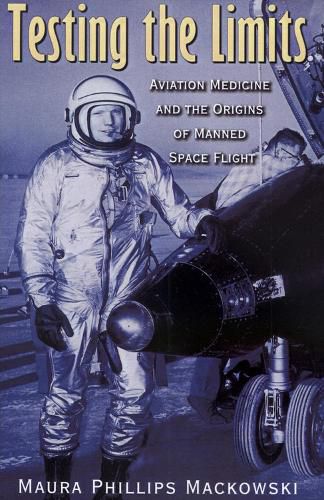Readings Newsletter
Become a Readings Member to make your shopping experience even easier.
Sign in or sign up for free!
You’re not far away from qualifying for FREE standard shipping within Australia
You’ve qualified for FREE standard shipping within Australia
The cart is loading…






This title is printed to order. This book may have been self-published. If so, we cannot guarantee the quality of the content. In the main most books will have gone through the editing process however some may not. We therefore suggest that you be aware of this before ordering this book. If in doubt check either the author or publisher’s details as we are unable to accept any returns unless they are faulty. Please contact us if you have any questions.
In 1958 the United States launched its first satellite and created the National Aeronautics and Space Administration (NASA) to oversee its new space program. By 1961 NASA was confident enough to put a human being into space. But how had it acquired enough medical knowledge to ensure an astronaut’s safety in just three years? It hadn’t. The credit goes instead to decades of military medical research.
Witnessing the first German missile attack on London in 1944, U.S. Army flight surgeon Harry Armstrong had been immediately concerned that aeronautical engineers would transform the A-4 (V-2) into a vehicle for transporting soldiers. He vowed, as founder (in 1934) of the military’s only aviation human-factors research lab, to make such trips survivable. Efforts at Wright Field and the army’s School of Aviation Medicine, which Armstrong had also turned into a world-class research institution, were the real reason for the successful start to America’s manned space program.
In Testing the Limits, Maura Phillips Mackowski describes the crucial foundational contributions of military flight surgeons who routinely risked their lives in test aircraft, research balloons, pressure chambers, rocket-propelled sleds, or parachute harnesses. Drawing on rare primary sources and interviews, she also reveals the little-known but vital contributions of German emigre scientists whose expertise in areas unknown to Americans created a hybrid specialty: space medicine. She reveals new details on human aeromedical experimentation at Dachau, Washington’s decision to limit astronaut status to males, and the choice to freeze the air force out of the research specialty it had created and brought to fruition.
$9.00 standard shipping within Australia
FREE standard shipping within Australia for orders over $100.00
Express & International shipping calculated at checkout
This title is printed to order. This book may have been self-published. If so, we cannot guarantee the quality of the content. In the main most books will have gone through the editing process however some may not. We therefore suggest that you be aware of this before ordering this book. If in doubt check either the author or publisher’s details as we are unable to accept any returns unless they are faulty. Please contact us if you have any questions.
In 1958 the United States launched its first satellite and created the National Aeronautics and Space Administration (NASA) to oversee its new space program. By 1961 NASA was confident enough to put a human being into space. But how had it acquired enough medical knowledge to ensure an astronaut’s safety in just three years? It hadn’t. The credit goes instead to decades of military medical research.
Witnessing the first German missile attack on London in 1944, U.S. Army flight surgeon Harry Armstrong had been immediately concerned that aeronautical engineers would transform the A-4 (V-2) into a vehicle for transporting soldiers. He vowed, as founder (in 1934) of the military’s only aviation human-factors research lab, to make such trips survivable. Efforts at Wright Field and the army’s School of Aviation Medicine, which Armstrong had also turned into a world-class research institution, were the real reason for the successful start to America’s manned space program.
In Testing the Limits, Maura Phillips Mackowski describes the crucial foundational contributions of military flight surgeons who routinely risked their lives in test aircraft, research balloons, pressure chambers, rocket-propelled sleds, or parachute harnesses. Drawing on rare primary sources and interviews, she also reveals the little-known but vital contributions of German emigre scientists whose expertise in areas unknown to Americans created a hybrid specialty: space medicine. She reveals new details on human aeromedical experimentation at Dachau, Washington’s decision to limit astronaut status to males, and the choice to freeze the air force out of the research specialty it had created and brought to fruition.